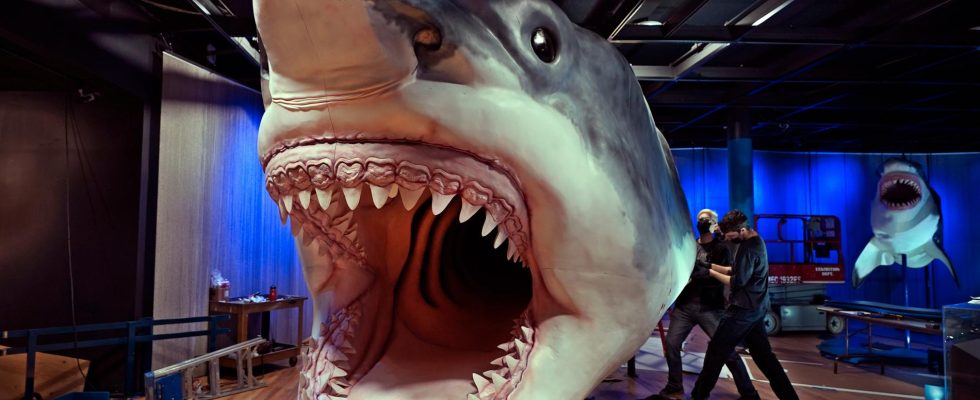unsaveSave
expand-left
full screen
chevron-rightnext
A model of the megalodon at the Museum of Natural History in New York. Archive image.
1 / 2Photo: Richard Drew/AP/TT
The giant prehistoric shark megalodon was perhaps not quite as coil-shaped as has been thought until now. By assuming the size of the modern great white shark, a false picture of the monster shark’s waist size has been created, according to a new study.
It is the largest shark that swam in the world’s oceans and is portrayed in books and films as a primeval monster. Megalodon, which lived several million years ago, looks similar to the great white shark – but was significantly larger.
Previous studies have concluded that Otodus megalodon was 15–20 meters long. But since sharks are mostly made up of cartilage, which is rarely fossilized, fossilized teeth and vertebrae are almost all that remains of the species.
This makes knowledge of the prehistoric shark’s appearance limited.
Slimmer figure
Traditionally, the great white shark (carcharodon carcharias) has been used as a model for the body shape of the megalodon, and based on that, researchers have concluded that it was as round in the belly as its now living relative. But in a new study, published in the journal Palaeontologia Electronica, 26 shark experts from around the world raise the possibility that the megalodon was actually longer and perhaps even had a slimmer figure.
They support their theory on the fact that different lengths have been reported in studies of the same megalodon fossil specimen. This led the researchers to take a closer look and compare the fossil vertebrae with the vertebrae of a now living great white shark.
“Our team reviewed the fossil record and discovered that megalodon was slimmer and possibly longer than we thought. Therefore, the modern mako shark may be a better model,” writes Phillip Sternes, biologist at the University of California and lead author of the study.
“It was still a giant predatory shark. But the results strongly suggest that the megalodon was not just a larger version of the modern white shark,” he writes further.
Different behavior?
Megalodon was at the top of the food chain in the prehistoric seas, but given the new knowledge of the body shape may have behaved differently than previously thought, the researchers believe. A slimmer body may indicate that the shark had a longer digestive tract and may not have had to eat as often to survive.
However, the study cannot provide any answers as to exactly what the megashark actually looked like.
